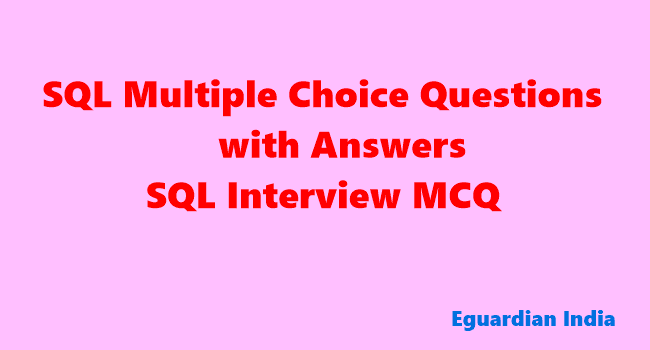Fundamental of Computer and Information Technology MCQ Pdf
Are you feeling the pressure of an upcoming exam on the fundamentals of computer and information technology? Well, fret no more! Whether you’re a tech enthusiast or just starting out in this exciting field, we’ve got you covered.
In this blog post, we have gathered a comprehensive set of Multiple Choice Questions (MCQ) along with their accurate answers to help you ace that test with flying colors. So, dear reader, if you’re seeking guidance and looking for an extensive resource conveniently compiled in one place, congratulations!
You’ve arrived at the right destination. Let’s dive into the world of computers and information technology together!
Fundamentals of Computer and Information Technology MCQ Question and Answer
1. ___ is a device that accepts information (in the form of digitalized data) and manipulates it for some result based on a program or sequence of instructions on how the data is to be processed.
Ans. Computer
2. Technically, a computer is a ___ machine.
Ans. Programmable
3. The invention of the ___ made smaller and less expensive computers possible.
Ans. Transistor
4. ___ was an important counting machine in ancient Babylon, China.
Ans. Abacus
5. The speed of the computer is usually measured in ___
Ans. Megahertz or Giga hertz
6. Different arithmetic operations are ___
Ans. Addition, Subtraction, Multiplication and Division
7. A device designed to assist in the entry of data into a computer is known as ___.
Ans. Input device
8. ___ device is categorized as a pointing device because it is used to point and select an option on the monitor.
Ans. Mouse
9. CCD stands for ___.
Ans. Charge-coupled devices
10. ___ is the electronic brain of the computer.
Ans. Central processing unit
11. ___ unit coordinates the activities of all the other units in the system.
Ans. Control
12. A single drum can have up to ___ tracks.
Ans. 200 tracks
13. ___ replaced vacuum tubes and ushered in the second-generation computer.
Ans. Transistors
14. Languages developed during second-generation computers are ___.
Ans. COBOL and FORTRAN
15. The development of ___ was the hallmark of the third generation of computers.
Ans. integrated circuit
16. ___ is the basic material used to make computer chips, transistors, silicon diodes, and other electronic circuits and switching devices.
Ans. Silicon
17. What is the technology used in fourth-generation computers?
Ans. Microprocessor
18. The three basic characteristics of microprocessors are ___.
Ans. Instruction Set, Bandwidth and Clock Speed
19. Artificial intelligence contains ____.
Ans. Games playing, Expert Systems, Natural Language, Neural Networks & Robotics
20. ___ is the branch of computer science concerned with making computers behave like humans.
Ans. Artificial Intelligence
21. Examples of supercomputers are ___.
Ans. CRAY-1, CRAY-2, Control Data CYBER 205 and ETA A-10
22. Personal computers are available in two models ___ and ___.
Ans. Desktop PCs & Tower PCs
23. Examples of handheld computers are ___.
Ans. Personal Digital Assistants, Cellular telephones and H/PC Pro Devices
24. The UNIVAC and ENIAC computers are examples of ___ computing devices.
Ans. First-generation
25. Decimal means base ___.
Ans. 10
26. The value of the bit pattern 11111111 is ___.
Ans. 255
27. The hexadecimal equivalent of (1011 1010 0011 .0010)2 is ___.
Ans. (B A 3 .2)16
28. The result of 7-2 using 1’s complement notation is ___.
Ans. 0100
29. The bit pattern 1011 in 1’s complement notation is ___.
Ans. – 4
30. The result of 7-2 using 2’s complement notation is ___.
Ans. 0101
31. The bit pattern 1110 in 2’s complement notation is ___.
Ans. – 2
32. If x,y,z contains values 0,1,1 then (x+z)y is ___.
Ans. 1
33. x+y.0 is ___ Law.
Ans. Commutative
34. x+1 =1 is ___ Law.
Ans. Dominance
35. Boolean product for 1 and 0 in AND has ____ value.
Ans. 0
36. Boolean product for 1 and 0 in OR has ___ value.
Ans. 1
37. Postulate P3 indicates ___.
Ans. The • and + operators are commutative
38. The D flip-flop can be interpreted as a primitive memory cell, zero-order hold, or delay line (True/False).
Ans. True
39. Shift Register is a group of ___ set up in a linear fashion.
Ans. Flip Flops
40. Shift registers can have co-parallel inputs and outputs, including serial-in, parallel-out (SIPO) and parallel-in, serial-out (PISO) types. (True/False)
Ans. True



